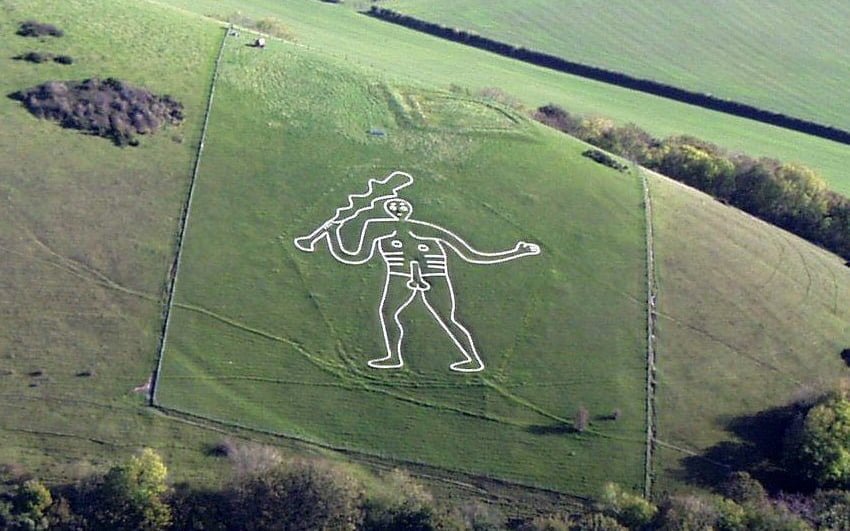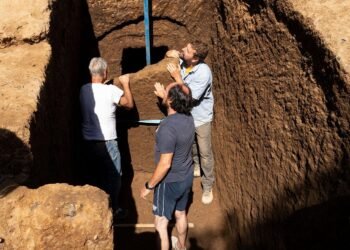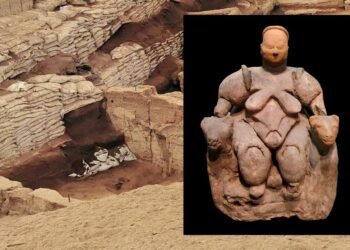Researchers from Oxford University have unveiled the true identity and purpose of the Cerne Abbas Giant, a 55-meter tall chalk figure in Dorset, England. Long shrouded in mystery, the giant, is now identified as a depiction of Hercules, serving as a mustering station for West Saxon armies during the Saxon period.

The giant, overlooking the village of Cerne Abbas, was initially thought to be a Celtic god or an ancient fertility symbol, with its earliest written record dating back to the late 17th century. However, recent research, including studies conducted in 1996 and tests by the National Trust in 2021, has determined its Anglo-Saxon origin, specifically between CE 700–1100, coinciding with the Viking invasions.
Helen Gittos and Tom Morcom, academics from the University of Oxford, spearheaded the latest research. They assert that the giant, originally carved as an image of Hercules, served as a rallying point for West Saxon armies facing Viking attacks.
The strategic location of the giant, protruding from a ridge near major routeways, with access to fresh water sources and proximity to a West Saxon estate, made it an ideal mustering spot during the conflicts with invading Vikings.
Gittos, Associate Professor in Early Medieval History, highlighted the importance of Hercules in the Middle Ages, particularly during the ninth century, describing him as a flawed hero both revered and reviled. The giant’s topographical position aligns with a special type of Anglo-Saxon meeting place, characteristic of a muster site for large groups, such as armies.
Furthermore, the researchers uncovered an 11th-century manuscript at the British Library that alludes to the giant in the tale of Saint Eadwold, a local hermit planting his staff atop the hill. The monks of Cerne Abbey, situated at the base of Giant Hill, later reinterpreted the figure as Saint Eadwold, possibly to lay claim to the saint’s relics.
Dr Morcom, a postdoctoral fellow at the University of Oslo, told the BBC: “Having a large, very obviously naked, pagan figure on your doorstep was an inconvenient fact for the monks, and they engaged in a piece of intellectual interpretation, associating him with their patron saint, Eadwold.”
The researchers emphasize that the giant’s identity was open to reinterpretation throughout the centuries, reflecting the evolving perspectives of those who interacted with it. Dr Morcom concluded, “I think we’ve found a compelling narrative that fits the giant into the local landscape and history better than ever before, changing him from an isolated mystery to an active participant in the local community and culture.”
The findings, set to be published in Speculum, the journal of the Medieval Academy of America, provide a more nuanced comprehension of the origins, purpose, and significance of the Cerne Abbas Giant.
























